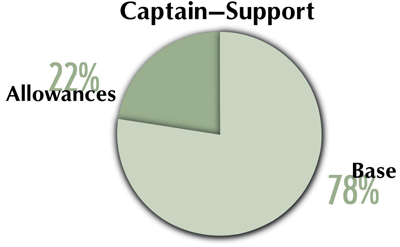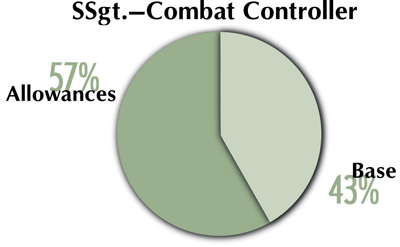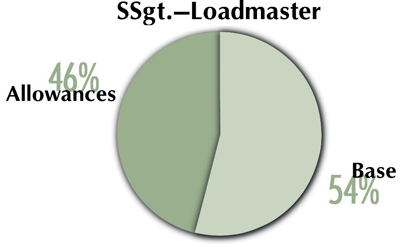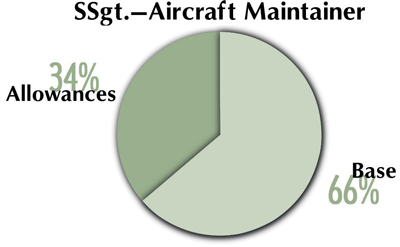In 1986, Congress passed the Military Retirement Reform Act, reducing the annuities of any new3ly entering US serviceman or -woman reitring with less than 30 years on active duty. The only real motivation was fiscal–to cut federal outlays.
Politicians said the annuity was “too generous.” The Wall Street Journal derided it as “a gravy train.” Rep. Les Aspin, the Wisconsin Democrat who later became Secretary of Defense in the Clinton Administration, deemed it “a boondoggle.”
The system had been under assault for decades, but huge federal deficits made it highly vulnerable. J. Peter Grace, head of a presidential cost-cutting commission, provided political impetus. In one odious comment, Budget Director David Stockman claimed: “Institutional forces in the military are more concerned about protecting their retirement benefits than they are about protecting the security of the American people.”
Not everybody thought cutting military retirement was a great idea. The Air Force Association said that a strong defense of the existing 20-year system could be made and that Congress was giving no consideration to the impact such action would have. Senior service leaders warned that change to retirement was the No. 1 concern of the troops.
Today, all signs are that the change has backfired badly. By reducing annuities of future 20-year retirees to just 40 percent of base pay-down from the traditional 50 percent-the new system is causing younger members to question the value of service careers.
The Air Force, as a result, is asking the lawmakers to undo the changes which, they claim, have damaged the service’s ability to hold onto sufficient numbers of valuable mid-career members. Retirement improvements, in fact, top USAF’s compensation wish list, with major pay reform running a close second.
“What we have experienced is a devaluation of about 25 percent in lifetime value of retirement,” said Col. Steven Tindell, chief of USAF’s Military Compensation and Legislation Division, who entered well before the 1986 demarcation date. “There is a big difference between what I will be getting and what somebody coming in today will get. It becomes an equity issue.”
Recent quality-of-life surveys bear out that contention, said Lt. Col. Susan Cooley, chief of the Air Force’s Compensation and Entitlements Team. Traditionally, members ranked retirement first or second among their reasons for staying in service. Among those mid-career members who will come under MRRA, however, it has slipped to fifth or sixth place. Asked recently if they considered the retirement system fair and equitable, only about 26 percent of enlisted members said they did.
Improvements the Air Force wants in other compensation categories are designed, in part, to improve retirement benefits. Take base pay for example. Recent raises have eased the effects of inflation, officials say, but not narrowed the gap between military and civilian wages. That discrepancy now is about 13.5 percent overall and considerably more in some specialties, said Tindell.
The Magic Year
Now, the Air Force’s aim is to close or at least substantially reduce the breach by 2003. It’s no coincidence that 2003 also is the year when the first members affected by MRRA will complete 17 years of service. Under MRRA, retired annuities are based on the average of the member’s highest three years of base pay. Thus, if the Air Force can win substantial increases in base pay, starting in 2003, then at least the annuities will be based on a higher final pay amount.
The Air Force also would like to restructure its current pay scales to reward promotion more than longevity, particularly in the upper enlisted grades. Again, the change would boost not only active duty pay but the retired annuities.
In 1998, Congress approved only a small cost-of-living raise and made some modest improvements in incentives. Although they rejected proposals to restore the 50 percent retirement formula, the lawmakers said the retirement changes and other pay matters should be included in a full-dress review of military compensation next year.
Given the complexity of today’s pay systems, a really comprehensive review could prove to be an ambitious undertaking. Traditionally, service compensation has depended less on long-range decision making and more on the tendency to make tactical responses to the needs of the moment.
This has created problems. In recent years, service pay has been tailored increasingly to specific purposes, the object being to maintain a reasonable overall level of compensation and apply additional incentives only as needed to meet special circumstances.
That approach, officials argue, is much the same as that followed by civilian employers. Companies offer a living wage to all workers and special inducements only to those with skills that are in demand at a given time. To compete, the services now extend bonuses and special pays not only to aviators, for one example, but also to medical, scientific, and engineering officers and a variety of enlisted specialties.
The Special Duty Assignment Pay program for enlisted members has become particularly complicated.
In that program, the Air Force now offers six levels of monthly pay (ranging from $55 to $375) to enlisted specialists such as recruiters, military training instructors, flying crew chiefs, pararescuers, and weapons directors. The list of eligible members is reviewed at least biennially, and skills can be added, dropped, or given different rates of SDAP based on the Air Force’s needs and the availability of specialists.
This trend toward using compensation to “manage” the force has led to some ironic consequences. During the recent drawdown, for example, the Air Force was paying some members extra money to stay, while it was offering others bonuses or early retirements to leave.
Excluded Factors
Until recently at least, the one constant in the otherwise fluid compensation system was the retirement formula. For years, members leaving after 20 years of active service have claimed annuities equal to half their base pay at separation and 30-year members have received 75 percent of base pay at separation.
In addition, retirement annuities have been raised regularly by Cost of Living Adjustment increases.
Though a succession of base pay raises put some upward pressure on retirement annuities, other factors have reduced the actual value of retired pay as a percentage of active duty income.
One of these factors has been the historic exclusion from the retirement formula of allowances, bonuses, and specialist pays. Consider, for example, the case of a master sergeant in aircraft maintenance who entered the Air Force in 1979 and is set to retire with 20 years of service. His total income, including various special pays, is pretty good-$40,663 a year. However, his retired pay spins off of his base pay, which is only $28,731. Fully 29 percent of his income comes from special pays; none of it counts in calculation of retirement benefits.
This master sergeant’s annuity, figured at 50 percent of final base pay, is just $14,365. That is only about 35 percent of his total active duty “salary” at the end of his service time.
That disparity between total income and base pay is nothing new. In fact, some analysts say there is no doubt that defense authorities have tended to hold down base pay deliberately in order to keep retired pay in check.
Recently, however, Congress has changed the retired pay formula twice and, in effect, further widened the gap. Service members now face three different retirement formulas, depending on when they entered service.
Those who entered before Sept. 8, 1980, still figure their retirement at 50 percent of their final pay. This is the formula that gives the master sergeant in the illustration 35 percent of his total active duty income.
Those who entered service on or after Sept. 8, 1980, but before Aug. 1, 1986, will find their retired pay figured not on their final pay but on the average of their highest three years of base pay. Under this formula, the master sergeant in the example would receive $14,052, or 34 percent of his active duty income. The difference is just over $300 per year.
Those who entered service on or after Aug. 1, 1986, come under the Military Retirement Reform Act, and they take a harder hit by far.
$3,000 Per Year
This plan, known by the name “Redux,” uses the high-three-years formula and allows 2.5 percent of pay per year as a multiplier. Then, however, it subtracts 1 percent for each year less than 30 years. Under this plan, the same master sergeant in the example would receive retired pay of only $11,242 per year, or about 28 percent of his total service income. The difference between that and the pay he would have received under the old final-pay formula is more than $3,000 per year.
All three plans provide retirees periodic cost of living increases based on the Consumer Price Index. However, MRRA bases its COLA on the CPI minus one percentage point until age 62. At that point, retired pay will be adjusted to reflect the full cost of living increase since retirement. But, thereafter, retirees will receive only partial COLAs again.
The retirement changes have been a setback, but there have been some recent improvements in the compensation system.
On Jan. 1, 1998, for example, a new Basic Allowance for Housing system took hold, replacing what had become a cumbersome system of quarters and variable housing allowances.
The new BAH system bases its rates on the cost of adequate housing in a given area for civilians with income levels comparable with those of the military members. A civilian contractor will survey housing costs nationwide, and the military salaries used for comparison will include base pay, quarters and subsistence allowances, and the military tax advantage.
Officials said that at Pope AFB, N.C., a typical Air Force installation, the 1999 BAH rates will range from $464.52 per month for an E-1 to $692.16 for an E-9. In most grades, this is more than the member would draw under the basic allowance for quarters/variable housing allowance system. Where that is not the case, a protection clause will assure that the member draws the higher rate.
The aim of the plan is to assure that members pay no more than 15 percent of their housing costs out of pocket. For Fiscal 1998, this “absorption” rate was about 19.8 percent, but officials hope to reduce the differential in the future.
A similar change now ties subsistence allowances to the food index supplied by the US Department of Agriculture rather than to fixed tables. The new quarters and subsistence rates will be phased in over the next five or six years, and officials said they will be watching closely to see how they are accepted.
Despite such reforms, military compensation remains a complicated tangle of pays, allowances, bonuses, incentives, and differential pays. Some critics suggest that if the object is to make service pay more visible and more competitive with that in the private sector, it would be better to put the military under a straight salary system.
Tindell thinks not. “You have to be careful when you are talking about the responsibility and authority that goes with grades,” he said. “I don’t think you want to mess too much with the service culture. If you can get a base pay that is competitive with the private sector and use that as your base, then you can make better decisions about your bonuses and incentives pays.”
Keeping the Best
In any case, officials insist, the civilian world doesn’t work on a straight salary system, either. Companies offer a variety of fringe benefits, such as free medical insurance and bonuses. Often they negotiate higher wages for people they want, pay bonuses to those with special skills, and make lucrative counter offers when workers threaten to go elsewhere.
The services now can offer an impressive array of incentives to talented people, but they still can be outbid in today’s labor market. In earlier decades, unemployment in the private sector helped military recruiting, but, as jobs have become more plentiful, the labor market has tightened and the services have struggled to get and hold good people, particularly in the high-tech skills. Despite recent raises, there still is that gap between military and civilian income.
To find out how big the actual difference is in specific skills, the Air Force recently used figures from the Bureau of Labor Statistics to make job-by-job comparisons, said Maj. Justo Rivera, chief of pay and allowances policy. It included military base pay, subsistence and housing allowances, tax advantages, and, where applicable, Selective Re-enlistment Bonuses and at typical civilian salaries in comparable fields. Here are some of the comparisons:
- USAF vehicle maintenance personnel vs. civilian auto mechanics: The civilian starting salary was only about 16 percent higher than the $22,571 for an E-2. At seven years and grade E-5, however, the typical salary of the civilian mechanic-$38,494-exceeded that of the military mechanic by 26 percent. At the 14-year point, the gap had widened to 29 percent, with the civilian making $47,663.
- USAF communications-computer systems operator vs. civilian computer worker. Here, the gap was wider–70 percent. Even with a substantial SRB figured in, the salary of an eight-year staff sergeant–$36,278–could not come close to that of the civilian counterpart–$61,646. At the 16-year point, the gap widened to 84 percent.
- USAF mid-career security policeman vs. a civilian police supervisor. The Air Force policeman (a married E-5 with nine years of service) made about 22 percent less than a policeman in civilian work, even with the Air Force member’s SRB included.
- USAF aircraft maintainer vs. civilian airline mechanic. Starting salary for a young E-2 maintainer was some 40 percent lower than that for beginning civilians. The gap narrowed at the seven-year point to about 21 percent, but it then gaped open again to 32 percent at 14 years.
While officials have welcomed recent pay raises, they note that their main effect has been only to offset rises in the cost of living and keep the gap between military and civilian income from getting wider. Until the gap is gone or substantially reduced, the services will be at a disadvantage in the labor market.
The Air Force looks not only to close the pay gap but also to restructure the military pay table, which has not changed significantly since 1949. The system is designed to reward both seniority (longevity increases) and performance (promotion increases), but the effect is different for different grades and lengths of service.
Under the current system, for example, a typical airman could receive as many as seven raises during his first three years in the Air Force–made up of longevity and promotion increases and annual raises. Over this period, he would get an almost 50 percent increase in pay. By contrast, an enlisted member with more than four years of service would receive only annual raises and one or, at most, two longevity increases over those same three years.
The Air Force’s strategy thus is (1) to smooth out the longevity points to give members about the same percentage increases across the board and (2) to provide more significant increases for promotion, particularly in the top three enlisted grades. The idea, officials said, is to encourage members to progress rather than stay in grade and wait for their next two-year “fogy” raises.
Rebuilding the pay table still also is a long-range goal, however. It would require agreement of the other services and Congressional approval. At the moment, officials are giving more attention to efforts to return to a 50 percent retired pay formula.
The Air Force would like to restore a system in which the annuity provided after 20 years is half the member’s final pay or at least of his high-three average. If the price of either option proves too high, a third possibility would be to retain some features of the MRRA approach but use a 50 percent multiplier and link COLA increases to other federal retirement plans.
Any approach that raises substantially the cost of retirement will encounter political obstacles. In recent years, the services’ retirement system has been a popular target for federal budget cutters. In the last four years alone, critics have made 17 proposals to cut retirement. Such proposals, even if they are not enacted, tend to undermine the confidence of career-minded members.
The services’ hope now is that they can make the case that the erosion of retirement benefits and the military-civilian pay gap are not only costing the forces needed people but threatening overall readiness.
Soldier’s Pay: The Early YearsHistory’s earliest warriors weren’t paid at all and relied on pillaging their enemies for compensation. It was not until the fifth century B.C. that Athens decided it needed to pay its troops to maintain a peacetime army. Compensation still was lower than that in the private sector, but, at the time, most soldiers had no civilian skills and were attracted by military life. Over the centuries, service pay remained low and often was uncertain. During the American Revolution, Gen. George Washington spent much of his time fighting Congress for pay for his troops. In 1933, at the depth of the Great Depression, President Franklin D. Roosevelt ordered a 15 percent cut in service pay to reduce federal spending. By World War II, service pay had been restored, but it was still meager. Enlisted base pay ranged from $50 per month for privates to $138 for master sergeants. Five percent longevity increases came every three years, but, during the war, few troops remained long enough to claim more than one such “fogy.” Officers fared slightly better. Their annual pay ranged from $1,800 per year for new lieutenants to $8,000 for major generals and above, and there also were allowances for members not furnished meals and quarters and additional payments for flying and foreign duty. There were few monetary incentives to join or to remain in service during the war but few were needed. Those who didn’t volunteer for service were impelled by the draft, and retention was no problem because terms of service covered “the duration of the emergency plus six months.” |
Military Pay and Retired Pay
|
The Birth of IncentivesAlthough the military draft continued to spur enlistments until 1973, the draft-era US armed services periodically had problems holding needed people. One early retention tool was the enlistment allowance which paid re-enlistees small bonuses based on past service. Later refinements tied the bonuses to the length of the new contract and to how critical the member’s skill had become. The idea of skill pay itself was considerably older than that, however. As early as 1914, Congress authorized substantial allowances for both enlisted and commissioned aviators (from 25 percent of basic pay for aviation students to 75 percent for military aviators). The same act authorized a year’s pay for the widows of members killed in an aviation accident. Early flight pay was justified by the fact that flying was risky and many fliers could not afford life insurance. It was only recently that such pay has been seen as an incentive for members to enter and remain in flying careers. Through World War II and beyond, flight pay was set at one-half of base pay. By 1974, however, it was getting out of hand. A succession of base pay raises had upped the rates and the senior officers who did the least flying were collecting the most. Congress and the services worked out a compromise that unlinked the aviation incentive from base pay and set up rates that favored fliers in mid-career. By then, other specialty pays had evolved. One was in reaction to problems that had surfaced as early as World War I, when the Air Corps promoted technicians into the NCO grades to give them more pay even if they often lacked leadership qualities. The solution adopted in World War II was to establish separate technician grades paralleling the NCO ranks. Technicians received the pay of noncoms but wore a “T” on their stripes to show they weren’t really sergeants. The Army continued to use a specialist system after the war, but the Air Force went back to a single rank system and rewarded specialists with special pays and bonuses. |
 |
 |
 |
 |
 |
Bruce D. Callander, a regular contributor to Air Force Magazine, served tours of active duty during World War II and the Korean War. In 1952, he joined Air Force Times, serving as editor from 1972 to 1986. His most recent story for Air Force Magazine, “Pressures on the Guard and Reserve,” appeared in the November 1998 issue.